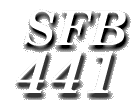
Project A5:
Distributional Idiosyncrasies in Logical Form
Head of the project |
Researcher |
Research Assistants |
|
Consultant for Experiments |
|
| Janina Radó |
Former Staff Members |
|
|
Goals
The aim of this project is to determine to what extent lexical elements are restricted in their contexts in terms of their syntactic, semantic and selectional characteristics. For some groups of lexical elements (including anaphora, pronouns in Binding Theory, polarity elements, and theoretical constructs such as traces e.g. in the form of the Empty Category Principle) this research has been going on for quite some time. Traditionally, these distributional restrictions are conceived as belonging to a separate set of well-formedness conditions which operates in addition to the regular set of structural rules. Their special status has motivated the paradigm shift, examined in Project A2. Despite studies of the distributional characteristics of individual classes of elements, no general formal distributional theory of generative linguistics has yet resulted, as most of the elements studied have been either functional or have belonged to closed classes. For this reason, a specific grammar module could be proposed for each, or, in the case of polarity elements, non-grammatical explanations could be found.
Based on previous research concerning negation, polarity and idiomatic expressions, the goal is to work out a general distribution theory and integrate this into Head-Driven Phrase Structure Grammar (HPSG). In order to examine distributional restrictions in pure form, in the first phase of the project only those elements were considered whose distributional behavior could not plausibly be reduced to independently motivated grammar modules. These are lexical elements which appear only in very limited contexts, however, they seem to follow certain rules.
(i) Tacheles reden/ *sprechen (Tacheles talk/ speak; ``talk straight'')
(ii) jemandem einen Schur antun/ *bereiten (to someone a Schur do/ cause; ``cause annoyance to someone'')
These kinds of bound elements can be found at the far end of a scale of distributional restrictions. The distribution of the elements on the opposite end of this scale completely follows from their inherent characteristics (i.e. syntactic categories, semantic content, selectional characteristics) and general principles of grammar. Those elements relevant in Binding Theory, as well as polarity items, are located at a more intermediate position on this scale.
Analogous to lexeme-lexeme-collocations of bound elements, there are also semantic distributional requirements. Negative polarity elements (NPIs), the subject of the current phase of this project, feature such specifications: NPIs must be licensed by certain elements within the logical form of the expression in which they occur. According to possible scope relations, these elements can be identified and classified.
(iii) Niemand/*Jeder von uns war jemals im Jemen.(No one/*everyone of us has ever been to Yemen)
(iv) Keiner/*Hchstens einer von ihnen bemerkte auch nur irgendetwas.(No one/*at most one of them noticed auch nur irgendetwas/``something'')
In collaboration with other projects, emphasis will be placed on annotated corpora (A1), which will serve as data classes for the project. Here, NPIs will be extracted from possible contexts using statistical methods. In the theoretical interpretation of data, semantic composition mechanisms will play a central role. This will be done within the theoretical framework of Lexical Resource Semantics (LRS), since this has already been integrated into HPSG, and is already a part of the prototype implementation. Based on the continuing development of this LRS module within the TRALE System, grammar fragments, which are crucial in the development of a theory, will eventually be implemented. The results will then provide examples of the treatment of the grammatical phenomena mentioned above.
The project consists of the following three research areas:
- The acquisition and classification of polarity elements in German
- Theoretical interpretation in the LRS framework, the formulation of a distribution theory
- Sample grammar implementation
Cooperation:
- A1: Corpus linguistic representation systems, generalizations from corpus data.
- A2: Empirical Motivation for licensing grammatical paradigms, modeling of HPSG.
- A3: Construction of phenomenon oriented, thoroughly annotated collection of data.
- B10: Typology and Logical Form of Sentential Negation
- C1: Linguistic data structures: cross-linguistic annotations and data types.
Last updated on January 26, 2008 by Beata Trawinski
